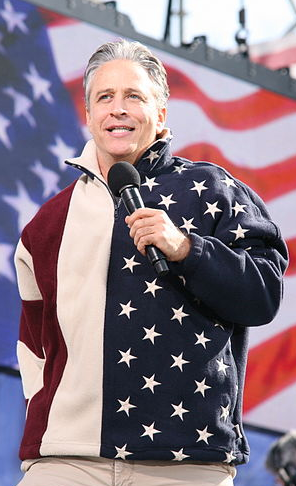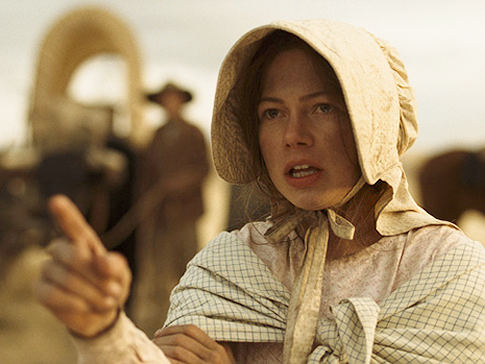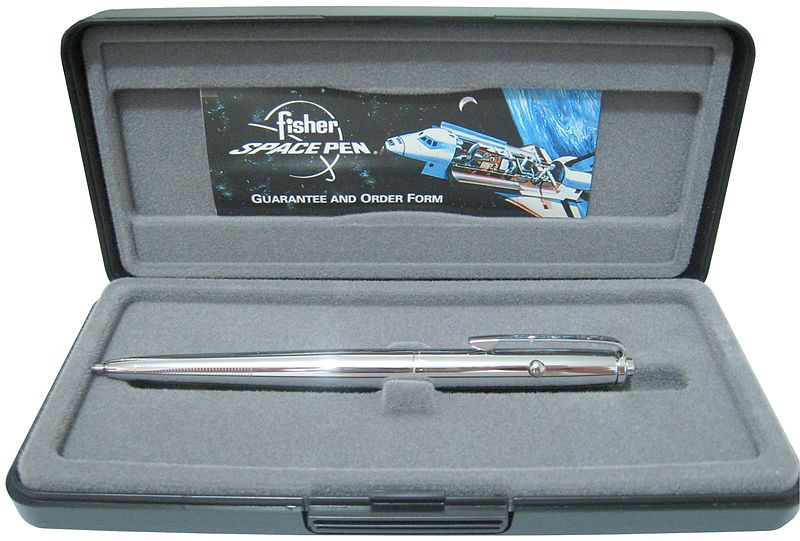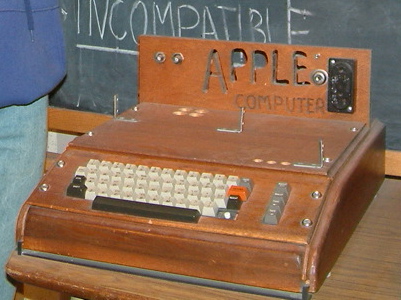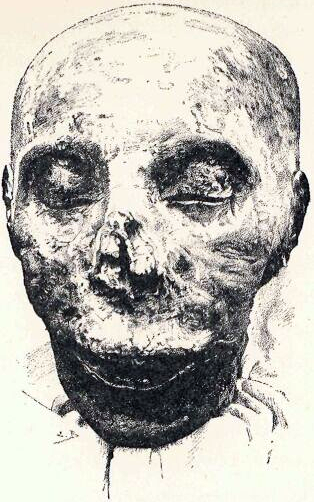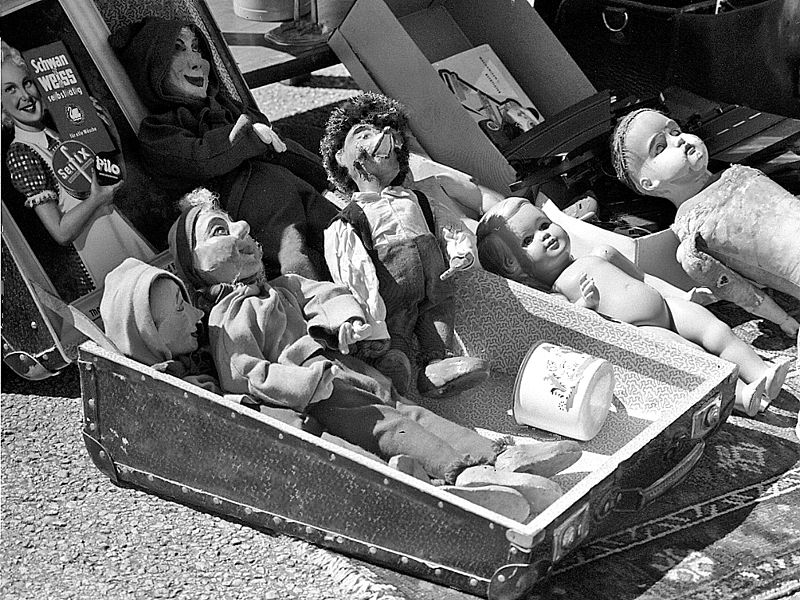Some search-engine keyphrases bringing traffic to Afflictor this week:
You are currently browsing the yearly archive for 2011.

Afflictor: Thinking the reception area at Planned Parenthood will change once the Teapublicans take over. (Image by François R. Cambuzat.)
- Recent Film: Meek’s Cutoff.
- Old Print Articles: Crazy coroner mummifies children and monkeys (1990) + Electricians demonstrate poor judgement (1888).
- Featured Videos: John Lennon on the Today Show (1974) + Fun and games on airlines (1970s) + Converting plastic back into oil + Astronaut Gus Grissom takes flight (1961) + Hand-sized robot to attempt triathalon + Good time-warp doc about Feminism (1974) + Disembodied rat brain cells control a robot + NBC reports on the future of TV (1980).
- Recently Posted on NYC’s Craigslist: Costco, low prices and so much more + I like to drink heavily before peering into the sky + Your kids don’t yet look enough like convicts.
- Summing up the Teapublican Party in three words.
- Is Jon Stewart too angry to be funny?
- What the morning news looked like right before the 9/11 attacks started.
- Silicon Valley’s bubble has not been burst by the recession.
- Steven Johnson recalls the game-changing effects of the Macintosh.
- Apple unveils its plans for futuristic Cupertino offices.
- Bioengineering self-destroying species can’t turn out badly, can it?
- Russian firm building entire cities in Kenya and the Congo.
- David Plotz examines the Wild West side of the American fertility industry.
- A brief note about zero-gravity pens.
- Olympic champion Rulon Gardner has nearly died many, many times.
- Simon Winchester rides the new rocket trains of China.
- Computer-written articles proliferate online thanks to new software.
- Taking refuge from Electromagnetic Waves in a Radio Free Zone.
- Looking back on a mysterious cluster of deaths in 1980s America.
- Baseball rebel Bill “Spaceman” Lee is profiled in 1978.
- 3D food printers from Cornell Creative Machines Lab use edible ink.
- Examining the long-term health-care costs of U.S. war vets.
- Project Gutenberg e-books pioneer Michael Hart passes away.
- What Kleenex tissues were originally meant for (not nose-blowing).
- Ben Katchor and Mark Mulcahy present a free musical in October.
- This week’s Afflictor keyphrase searches.
I don’t agree with the great Esquire writer Tom Junod that Jon Stewart has lost his sense of humor over the years, but here’s an excerpt from his interesting new profile of TV’s most-lauded truth-teller:
“Now, you have to understand Jon Stewart is just like everybody else: He can be a dick. His father took off when he was a kid, leaving a hole in his heart approximately the old man’s shoe size. He’s damaged and is capable of doing damage in return, especially in close quarters. There are plenty of Daily Show staffers, present and former, who love and revere their boss for his difficult brilliance. There are also plenty — mostly on the former side — who have been, well, fucked up by him and his need to dominate. When he arrived at The Daily Show in 1999, its humor was goofy and improvisational, based on the interplay between the fake-news host and the fake-news correspondents and dependent on whimsy and happenstance. But Stewart knew what he wanted right away, and it wasn’t that. He wanted the show to be more competitive, almost in a news-gathering sense, and he wanted it to have a point of view, which happened to be his own. There are writers and producers from the first five years of the show, both male and female, who are described as ‘battered wives’; hell, there are people who used to work for him who are scared to talk about him because they’re scared of not being able to work again. And before he pushed out the show’s cocreator, he notoriously threw a newspaper at her in a story meeting and then, according to a staffer, apologized to her later with the words ‘Sorry, that was the bad Jon — I try not to let him out…'”
••••••••••
Jon Stewart in less complicated times:
Interviewing Anna Nicole Smith, 1994.
Romantic leading man, 1998.
Related posts:
- Stewart interviews George Carlin. (1997)
- Junod profiles Steve Jobs. (2008)
- Junod profiles an abortionist. (1994)
Tags: Jon Stewart, Tom Junod
Rat brain cells control robot.
From Aaron Saenz’s Singularity Hub post about Apple’s planned futuristic Cupertino offices, designed by Steve Jobs and scheduled to open in 2015: “Apple Campus 2, nicknamed ‘the Mothership,’ is set to break ground in 2012 and it looks simply stunning. Part flying saucer, part hadron super collider, part Dr. No’s lair, the Mothership will be a 2.8 million square foot facility located on a 175 acre lot off Highway 280 in Cupertino. Featuring a 1000 seat auditorium, 300,000 square feet of research space, and its own power plant, the new campus will house Apple and 12,000 in house employees in glorious style.”
Tags: Aaron Saenz, Steve Jobs
“We’ve come to a terrible place,” says a member of a lost and increasingly desperate 1845 traveling party on the Oregon Trail, in Kelley Reichardt’s understated 2010 drama. A portrait of pioneers who have a date with Manifest Destiny, the film follows a blustery guide and several clans as they traverse the Northwest looking for America’s future, having been sold on stories of plenty, but instead finding a cruel earth that dispenses wealth or woe on a whim.
Gruff guide Stephen Meek (Bruce Greenwood) talks big about the gold in them thar hills, but the three families who’ve paid him to deliver them to some semblance of utopia—the Tetherows, the Whites and the Gatelys–are low on water and patience. They’ve been wandering the desert for weeks and have come no closer to their original destination. Lost in a strange land that is not yet American, the party puts up with all manners of privations as they continue on their road to nowhere. When Meek captures an Indian, Emily Tetherow (Michelle Williams) believes that they may be better off allowing the stranger (Rod Rondeaux) to lead them than their puzzled pathfinder, although there is the chance they will be delivered into an ambush. But one thing can be scarier than this choice: the realization that there truly is no choice to be made, that the forks in the road will decide their fate regardless of who is at the head of the line.
It’s easy to forget in our insta-societry that for much of our country’s history pioneering meant heading somewhere and then waiting for the future to arrive. Until civilization took root, settlers were prone to the conditions and dependent on luck as well as grit. But the pioneer spirit has come to mean something different to us–not waiting for the future to arrive, but trying to keep up with one that arrives with stunning regularity. That’s where we are now, pioneers all, willing or not.•
Tags: Bruce Greenwood, Kelly Reichardt, Michelle Williams, Rod Rondeaux
John Chancellor and NBC News look (astutely) at the future of communications in 1980.
Tags: John Chancellor
At the Atlantic, Alexis Madrigal looks a new book by Shelley Adler which comes to unusual conclusions about the mysterious cluster of deaths among Hmong men who had emigrated to America in the 1980s. The piece’s opening:
“They died in their sleep one by one, thousands of miles from home. Their median age was 33. All but one — 116 of the 117 — were healthy men. Immigrants from southeast Asia, you could count the time most had spent on American soil in just months. At the peak of the deaths in the early 1980s, the death rate from this mysterious problem among the Hmong ethnic group was equivalent to the top five natural causes of death for other American men in their age group.
Something was killing Hmong men in their sleep, and no one could figure out what it was. There was no obvious cause of death. None of them had been sick, physically. The men weren’t clustered all that tightly, geographically speaking. They were united by dislocation from Laos and a shared culture, but little else. Even House would have been stumped.
Doctors gave the problem a name, the kind that reeks of defeat, a dragon label on the edge of the known medical world: Sudden Unexpected Nocturnal Death Syndrome. SUNDS. It didn’t do much in terms of diagnosis or treatment, but it was easier to track the periodic conferences dedicated to understanding the problem.
Twenty-five years later, Shelley Adler’s new book pieces together what happened, drawing on interviews with the Hmong population and analyzing the extant scientific literature. Sleep Paralysis: Night-mares, Nocebos, and the Mind Body Connection is a mind-bending exploration of how what you believe interacts with how your body works. Adler, a professor at the University of California, San Francisco, comes to a stunning conclusion: In a sense, the Hmong were killed by their beliefs in the spirit world, even if the mechanism of their deaths was likely an obscure genetic cardiac arrhythmia that is prevalent in southeast Asia.”
Tags: Alexis Madrigal, Shelley Adler
Evolta is headed to Hawaii next month for the challenge.
That close and obsessive reader, Tyler Cowen of the Marginal Revolution, posted this great passage from Kitty Burns Florey’s book, Script and Scribble: The Rise and Fall of Handwriting:
“There’s a popular myth that NASA spent ‘millions’ of dollars developing a pen for astronauts to use in the weightless environment of a space ship — while their sensible Russian counterparts were happy to use the low-tech pencil. Alas, for all its appeal and plausibility, this is not true. Initially, astronauts and cosmonauts were both equipped with pencils, but there were problems: if a piece of lead broke off, for example, it could float into someone’s eye or nose. A pen was needed, one that would defy gravity, write in extreme heat or cold, and be leak proof: blobs of ink floating around the cabin would be more perilous than a stray pencil lead. A long-time pen maker named Paul C. Fisher patented the ‘space pen’ in 1965 (which he had developed at the cost of a million dollars, at the request of but not under the auspices of NASA.) NASA bought four hundred of them at $6 each, and, after a couple of years of testing, the pens were put into space.”
••••••••••
Manufacture of the Fisher Space Pen:
Steven Johnson, who wrote The Ghost Map, a fascinating account of amateur epidemiology in Victorian England, shares his recollections of the mind-altering, game-changing effect of the Macintosh computer, in the Wall Street Journal. An excerpt:
“But that first Macintosh did much more than expand my data storage needs. It also fundamentally changed my relationship to technology—and in doing that, ultimately changed the course of my life.
It’s hard to remember now, but in the mid-1980s—before Wired Magazine, Pixar, dot-com start-ups, celebrity tweeting—being obsessed with your computer had almost no cultural cachet. You were just a nerd, full stop. The computers of the day had all the playfulness of a tax audit, and the creative people who used them did so begrudgingly.
But one look at the Mac and you could tell something was different. The white screen alone seemed revolutionary, after years of reading green text on a black background. And there were typefaces! I had been obsessed with typography since my grade-school years; here was a computer that treated fonts as an art, not just a clump of pixels. The then-revolutionary graphic interface made the screen feel like a space you wanted to inhabit, to make your own. To paraphrase Le Corbusier, the Mac was a machine you wanted to live in.” (Thanks Browser.)
••••••••••
Steven Johnson revisits the cholera outbreak of 1854 during his TED Talk:
Tags: Steve Jobs, Steven Johnson
Gus Grissom makes the second manned U.S. space flight, July 21, 1961. He would perish in a cabin fire during a test run for Apollo 1 five years later.
Tags: Gus Grissom, Virgil Grissom
A shockingly ghoulish chapter from the annals of American medicine was recorded following the death of New York coroner Dr. Thomas Holmes, who had stealthily been using unclaimed child cadavers to experiment with the mummification process. An excerpt from a story about his dark science which ran in the November 2, 1900 Brooklyn Daily Eagle:
“Dr. Holmes died January 8 of softening of the brain. He was at the time experimenting with embalming gas. The other day, through the Board of Health, the police removed all the specimens from the basement. They had been put in a box and had lain there almost untouched since Dr. Homes’ death. Their miscellaneous nature may be judged from the following report made by Dr. Wuest after an examination of the specimens of the morgue.The remains are: The mummified body of a male child, apparently 11 years old, with head, shoulders and arms missing. Had evidently been severed from the body with a saw and body was as hard as wood. Sections of skin cut. Whole length of remains, 39 1/2 inches. The body was mummified to such an extent that a crosscut saw went through it like pine wood. The consistency as of dry leather. The body was sawed across the bottom and then between the legs and spine. The remains were evidently many years old. With these remains were those of three other children. There was also removed from the place at the same time two mummified bodies of monkeys and one head of a monkey.
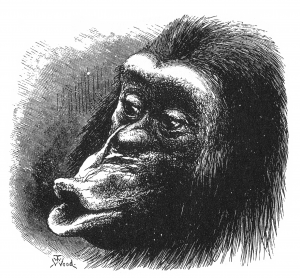
"There was also removed from the place at the same time two mummified bodies of monkeys and one head of a monkey."
The late Dr. Holmes was born at 42 Forsyth Street, Manhattan, in 1842. He studied medicine and graduated from the University of the City of New York. He soon afterward came to practice in the Eastern District, where he amassed considerable wealth. Shortly before the Civil War he bought about twelve lots on the east side of Marcy Avenue, between South Eighth Street and Division Avenue, and other property, and was at one time said to be worth $100,000. During the Civil War he volunteered as an embalmer and embalmed with a fluid which he prepared himself the bodies of 28,400 soldiers.
According to his widow, the doctor first attracted the attention of President Lincoln by embalming the body of Captain Ellsworth.
After the war Dr. Holmes returned to his home in the Eastern District. He at first resumed the practice of medicine, but as years went by began to devote more and more attention to the study of the embalming processes. At one time he thought he could preserve fresh beef and purchased for purposes of experiment an entire cargo of beefs from Texas. By this purchase the doctor lost nearly $17,000 because the beef all had to be destroyed.
After severe losses Dr. Holmes began to devote himself more exclusively to embalming human subjects, trying to invent what he described as the dry process–that is, embalming or preserving by use of gas. He claimed for his invention that it was superior to that used by the Egyptians four thousand years ago. On this process, it is said, he secured letters of patent. He obtained all the human subjects the remains of which have been found in the cellar from Bellevue Hospital, in Manhattan, where he was well known among students. The monkeys were given to the doctor by friends. Some years ago the doctor began to show decided signs of eccentricity. He put some of the stuffed animals in the windows of his home and this began to excite the curiosity of children going to school.

"At one time he thought he could preserve fresh beef and purchased for purposes of experiment an entire cargo of beefs from Texas."
One winter night two years ago, Dr. Holmes wrote a long incoherent letter to the city editor of the Eagle, in which the doctor hinted that he would divulge the secret of his discovery which he had at last perfected. A reporter called at the house and chatted with the doctor for over two hours. Whenever any question was put to him in regard to his invention, however, he evaded it. He would occasionally refer to the preservation of bodies and then divert to some meaningless narrative in regard to the war.”
Akinori Ito has created a machine that transforms plastic back into oil. Maybe someday the millions of tons of plastics that are accidentally dropped into the oceans from recycling barges each year will be sought the way oil is now.
Tags: Akinori Ito
A railway station in Osaka has a water printer that dispenses information and entertainment to commuters with the aid of H2O.

"There was no way for Ru to moderate his frenetic relentlessness. He pushed everything to the max." (Image by Tim Hipps.)
From frostbite to a broken neck to a plane crash to morbid obesity, Greco-Roman wrestler Rulon Gardner has famously cheated death so many times it’s difficult to remember that the farmboy scored one of the greatest upsets in Olympic history just a little more than a decade ago. From a 2007 GQ profile by Michael Paterniti:
“After defeating Karelin—in a match that became known as Miracle on the Mat—Ru appeared on Leno, Oprah, Letterman. He showed up at the Espy Awards and was photographed with Tiger Woods and Lara Flynn Boyle. He befriended heroes like Garth Brooks and Jason Giambi. He won the prestigious Sullivan Award, given to the country’s best amateur athlete. There were parades and city keys, more awards and gifts, including a waverunner from Rosie. He showed up in a ‘Got Milk?’ ad, hoisting buckets of milk while wearing a creamy white mustache. He went on tour, giving inspirational speeches to corporate clients willing to pay up to $15,000 a speech. He wrote his autobiography, titled Never Stop Pushing.
If he didn’t entirely believe his own legend yet, if he approached everyone as if he were still the old affectless Rulon Gardner, the farm boy from Star Valley seeking a little love and approval, he had seen through to a life beyond the Valley. And that life included proving he was no fluke by winning World Championships the following year and then preparing to defend his gold medal at the 2004 Games.
Where he once clandestinely sold the Cuban cigars he’d collected at an international meet in Havana in order to support himself, his new-won fame now turned on a spigot of income flow. His father had once lived over him, always on the verge of bankruptcy, and here he was, Rulon Gardner, a national treasure having made $250,000 the year after he won his gold—and the number was climbing. (‘He spent nine minutes on the mat with that ugly man from Russia,’ Reed Gardner jokingly told a reporter. ‘I spent fifty to sixty years on the farm, and I don’t have nothin’.’) So, he’d begun to accumulate toys, to live a grown-up version of the childhood he’d missed, with motorcycles and guns and a shiny snowmobile he took into the mountains near Star Valley. Of course there was no way for Ru to moderate his frenetic relentlessness. He pushed everything to the max.
Extreme snowmobiling can be as harrowing as any sport invented, man and machine against the mountain, finding aggressive routes up pitched faces, jumping rivers, riding into deep powder, and searching for perfect isolation. There are breakdowns and strandings, sudden submersions in icy water and the constant challenge of righting a 500-pound machine after having fallen chest-deep in snow—all in quest of some banana-cream vision out there through the trees, up on the ridge, gazing all those silver miles over Wyoming. In other words, it combines all the ingredients that make someone like Rulon Gardner tick: high-octane risk-taking, brute physicality, farm-boy ingenuity, nimble coordination, and conflict reduced to its simplest denominator, survival.
In February 2002, Ru went out snowmobiling with two friends in the Bridger-Teton National Forest, in Wyoming, thirty minutes from his home. They cruised the high peaks and winding valleys for a couple of hours until Ru peeled off, alone, into a gully of virgin snow near the head of the Salt River, ‘to play a little,’ as he put it. Shooshing down into the gully, he had no inkling that he wouldn’t be able to get out for seventeen hours. He was wearing a T-shirt, sweatshirt, and fleece pullover, having left his jacket behind. The sun had begun to dip in the sky; the temperature, which had been twenty-five degrees, began to plummet. Over the course of the next hours, Rulon tried to work his way out of the gully. His machine didn’t have the power necessary to take him back up the route he’d just dropped down. Worse, as he crisscrossed the Salt River in an increasing panic, occasionally submerging his sled, he found himself in a narrow gully where, ultimately, his machine became stuck between two boulders. During the journey, he had to repair a belt and fell four times into the river, soaking his clothes. (‘Once I got wet, I knew I had about an hour before frostbite and hypothermia,’ he said.) Finally, as night fell, he dug out a spot among the trees and waited for his own inevitable death. Sometime around 2 a.m., he heard the roar of snowmobiles, but then the sound faded. ‘I thought I was rescued,’ he said. ‘They came within 200 yards, and I was yelling, but they couldn’t hear me over their engines—and then they just turned away.’ He slipped in and out of consciousness, having visions: first of Jesus and then of his brother Ronald, who died at the age of 14 of a rare blood disease. (When his leg had to be amputated because of gangrene, Ronald said, ‘It’s okay, Dad, I can wrestle with one leg.’) Time crawled. What helped keep him alive was the thought of his family and friends finding him frozen there, a lifeless face with eyes open like Jack Nicholson in The Shining.
The next morning he was spotted by a search plane, and two hours later a helicopter landed, and he was able to crawl across the snow and climb in. His core body temperature had dropped into the 80s, and both his feet were so badly frostbit it would take four surgeries and three months before he could walk.” (Thanks TETW.)
••••••••••
The Biggest Winner:
The Biggest Loser:
Tags: Michael Paterniti
JJ69 UFO sighting over governor’s Isl (NY harbor)
Did anyone see the ufo hovering over NY harbor near the statue of liberty and governor’s Isl. The thing stood there about 40 seconds then shot straight up like a rocket faster than anything I’ve ever seen before. about a hour ago
••••••••••
Friend, foe or fantasy?
Lie:
Die:
Cry:
During the 1970s, the golden era of the airline industry.
At the New York Times, David Plotz, a really talented writer and editor, weighs in on the positive side of the utter lack of regulations overseeing America’s fertility business. An excerpt:
“The American fertility business has long been a cowboy enterprise — cavalier about rules, casual about paperwork, irritated by government interference. Its strange place on the political spectrum shielded it from the regulation that guides other kinds of medicine, or real estate, or even used car sales. Conservatives, skeptical of regulation, were glad to leave fertility alone, and let it grow into a profitable marketplace. Liberals, normally fond of regulation, were leery of doing anything to dictate women’s reproductive choices. The result was an open field.
And there’s no doubt that the American fertility business has been way too chaotic: Sperm banks run by unqualified cranks, unscrupulous egg donation schemes, and practically no way to keep track of who’s fathering whom. (In my reporting, I’ve met numerous sperm donors who travel from bank to bank to bank, spawning uncounted numbers of kids, and leaving virtually no paper trail.) It’s certain that more regulation, and an end to donor anonymity, would clean up the industry, soothe customers, and help donor offspring.
Still, we’ll miss the lawless fertility business when it’s gone. Its lack of rules spurred innovation, and transformed fertility from a prudish, conservative corner of medicine into a consumer-driven business.”
Tags: David Plotz
About 5% of Americans believe that they are “allergic” to the electromagnetic waves that allow our seemingly endless communications connectivity. Some have begun taking refuge in a Radio Quiet Zone in West Virginia. From a BBC report:
“Diane Schou is unable to hold back the tears as she describes how she once lived in a shielded cage to protect her from the electromagnetic radiation caused by waves from wireless communication.
‘It’s a horrible thing to have to be a prisoner,’ she says. ‘You become a technological leper because you can’t be around people.
‘It’s not that you would be contagious to them – it’s what they’re carrying that is harmful to you.’
Ms Schou is one of an estimated 5% of Americans who believe they suffer from Electromagnetic Hypersensitivity (EHS), which they say is caused by exposure to electromagnetic fields typically created by mobile phones, wi-fi and other electronic equipment.”
Tags: Diane Schou
America’s Dream Factory used to be Hollywood, but it’s Silicon Valley now, a place where science and tech push furiously toward the future, untouched even by severe global economic woes. From “Bubble Boys,” Christopher Beam’s smart New York magazine article about a world of big ideas and even bigger money:
“Right this minute, Silicon Valley is America’s opposite: House prices are soaring and demand for young talent far outstrips supply. The ongoing cyberspace race between Facebook, Apple, and Google, among others, means computer engineers enjoy more freedom—and power—than ever before. The barriers to entry for web programming are almost nonexistent. Angel investors are blessing start-ups left and right, and launching a software company is cheaper than ever. Do I take the offer from Google, or take the venture capital to start my own thing? Only in this one little quadrant do people have the luxury to ask such questions. For Feross [Aboukhadijeh], the son of a schoolteacher and a Syrian-born electrical engineer, the forecast is bright, though indistinct. He may become the next Mark Zuckerberg or Steve Jobs; he may not. But while most of the country is in economic darkness, the American Dream is beaming bright in Palo Alto.”
The Cornell Creative Machines Lab is trying to popularize 3D food printers. From a Lakshmi Sandhana article in Fast Company:
“The newest 3-D food printer, now being honed at CCML, can produce: tiny space shuttle-shaped scallop nuggets (image above); and cakes or cookies that, when you slice into them, reveal a special message buried within, like a wedding date, initials (image below) or a corporate logo. They can also make a solid hamburger patty, with liquid layers of ketchup and mustard, or a hamburger substitute that’s made from vegan or raw foods.
The CCML food printers require edible inks and electronic blueprints called FabApps. This machine prints food using multiple cartridges, going line by line until the desired shape is extruded. ‘The electronic blueprint specifies exactly which materials go where–it is essentially a blueprint of the food item,’ says Hod Lipson, the head of the lab.”
Tags: Hod Lipson, Lakshmi Sandhana
Trains that look like rockets will, perhaps, take China to the moon or the future or something, even as concerns about corruption and safety linger. In “How Fast Can China Go?” in the new Vanity Fair, Simon Winchester writes about riding the recent inaugural CRH380A bullet between Shanghai and Beijing. An excerpt:
“Shanghai’s Rainbow Bridge Station is sited next to the city’s old (but newly rebuilt) domestic airport and in a fast-growing nexus of skyscrapers, restaurants, and subway lines (the city had no subway lines until 1995 and now has 11, each one built deeper than the last). The station is run by a woman, Bao Zhenghong. She is a little under 40, pretty, brisk, friendly, with a blue diamond-shaped badge of authority (over dozens of men, at least) on the sleeve of her no-nonsense uniform blouse. As she paced down the concourse marble she remarked, between shy grins and blushes, that she had started work as a menial at a suburban station 20 years ago, on graduation from technical school. She could not in her wildest dreams, she said, have imagined being so swiftly promoted to take total control of this $2.3 billion glass monument (built in only two years) to China’s newness. Hers is the largest station in Asia, with 60 platforms: it sees 250,000 passengers a day, is made of 80,000 tons of steel, is home to countless stores and restaurants and viewing galleries, and is powered by the biggest solar-panel array in creation.
Miss Bao earns only $900 a month, hardly within a whisper of her country’s growing battalions of millionaires, but she’s proud nonetheless: A young woman like me, she gestured at the echoing immensity, standing under a football-field-size electronic display flickering with train information. Who could have believed it?
But behind her was a red silk banner, which was half the station’s width, and which probably granted her all the credibility she needed. It was a banner displaying a 100-yard-long sentence in large Chinese characters, a reminder of the underpinning ethos of a country that to many seems merely—but probably wrongly—a capitalist juggernaut, spinning wildly toward an improbable future. The sign was old-school politburo propaganda, the kind of rhetoric that once blared interminably down from loudspeakers in every factory and village commune in the country. It displayed for the ideological benefit of everyone in her station a sober exhortation, one that most station workers know by heart: LET US ALL WORK HARD TO HARNESS THE GOOD OF TECHNOLOGICAL ACHIEVEMENT TO CREATE THE FINEST RAILWAY IN THE WORLD FOR THE ULTIMATE BETTERMENT OF THE CHINESE PEOPLE. Miss Bao grinned. Perhaps that is why an achievement like hers is more believable.”
••••••••••
Zooooom…
Tags: Simon Winchester
 From a Steve Lohr New York Times article about computer-written articles proliferating online thanks to new software, like that created by the good people at Narrative Science:
From a Steve Lohr New York Times article about computer-written articles proliferating online thanks to new software, like that created by the good people at Narrative Science:
“The company’s software takes data, like that from sports statistics, company financial reports and housing starts and sales, and turns it into articles. For years, programmers have experimented with software that wrote such articles, typically for sports events, but these efforts had a formulaic, fill-in-the-blank style. They read as if a machine wrote them.
But Narrative Science is based on more than a decade of research, led by two of the company’s founders, Kris Hammond and Larry Birnbaum, co-directors of theIntelligent Information Laboratory at Northwestern University, which holds a stake in the company. And the articles produced by Narrative Science are different.
‘I thought it was magic,’ says Roger Lee, a general partner of Battery Ventures, which led a $6 million investment in the company earlier this year. ‘It’s as if a human wrote it.'”
Tags: Steve Lohr


